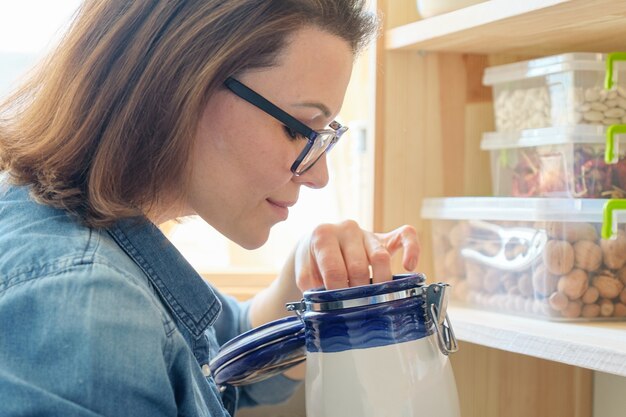How to Use a Refrigerator Thermometer to Keep Your Food Safe and Fresh
Picture this: you just returned from a grocery run, bags brimming with fresh produce, dairy, and meats. You stash them all neatly in your refrigerator, feeling secure that they’ll stay crisp and safe until you need them. But pause for a moment—without knowing your fridge's exact temperature, can you be absolutely sure? Enter the unsung hero of kitchen safety: the refrigerator thermometer. This simple tool not only ensures your food remains fresh but also prevents spoilage, saving you money and health concerns alike. Let’s dive deep into how it works and why it's indispensable in any kitchen.
📉 Why You Need a Refrigerator Thermometer
Many people rely on their refrigerator dials, assuming that setting it to "cool" or "cold" is sufficient. However, these settings can be misleading. A refrigerator thermometer offers precision, guaranteeing that your appliance maintains the optimal temperature for food safety, generally between 35°F and 38°F (1.7°C to 3.3°C).
Risks of Improper Temperature
A refrigerator that is too warm invites bacteria growth, potentially leading to foodborne illnesses. Conversely, overly cold conditions might freeze delicate produce, affecting texture and taste. Using a refrigerator thermometer minimizes these risks by providing a consistent, accurate temperature reading.
🛠️ Choosing the Right Refrigerator Thermometer
Not all refrigerator thermometers are created equal. Here are factors to consider when selecting one:
Type of Thermometers
- Digital Thermometers: Offer precise readings with an easy-to-read display. Some models even come with alerts to notify you if the temperature drifts from the safe zone.
- Dial Thermometers: These traditional models are straightforward and often less expensive. However, they may lag slightly in response time compared to digital versions.
- Wireless Thermometers: Provide remote monitoring via an app, offering convenience if monitoring from a distance is necessary.
Features to Look For
- Accuracy: Look for thermometers with a minimal margin of error. Consistent readings ensure that your settings are properly adjusted.
- Durability: Choose thermometers made from sturdy materials that can handle the cold, moist environment of a refrigerator.
- Ease of Use: A clear display and uncomplicated setup process enhance usability, especially if it involves monitoring by older individuals or children.
🏡 Where to Place Your Refrigerator Thermometer
Placement plays a crucial role in ensuring accurate readings. Here’s how you can optimize your thermometer’s location:
- Center Placement: Place the thermometer in the middle section of the fridge. This area often represents the median temperature, avoiding extremes that can occur near the door or back.
- Away from Walls: Avoid placing the thermometer directly against the sides, as these areas can be warmer or colder, affecting accuracy.
- Consistent Position: Keep the thermometer in one location to ensure consistent readings over time. Frequent movement may result in varying readings that don't reflect true averages.
🔄 Interpreting Your Thermometer Readings
Understanding what the numbers mean is as essential as getting the readings themselves:
Ideal Temperature Zones
- Safe Zone: As mentioned, 35°F to 38°F (1.7°C to 3.3°C) is the sweet spot. Within this range, food stays fresh without freezing.
- Adjustment Necessities: If your readings fluctuate significantly above or below, adjustments are necessary. Many refrigerators require a setting change and periodic monitoring to stabilize.
Regular Monitoring
Regular checks, at least once a week, ensure that no major temperature shifts have occurred unnoticed. This practice becomes particularly valuable during seasonal changes, as ambient temperature can subtly influence your fridge's performance.
🤔 Common Questions about Refrigerator Thermometers
Can a fridge be too cold?
Yes. Freezing fresh produce can lead to spoilage in texture and nutrition, and certain dairy items might experience separation or other textural issues.
How often should you replace your refrigerator thermometer?
Generally, quality thermometers are durable. However, digital models might require battery replacements more frequently than the thermometer itself. Check your device instructions for specific guidance.
🌟 Practical Tips for Refrigeration Efficiency
A consistently well-performing refrigerator not only guards food safety but also functions efficiently, saving energy and costs. Here are several strategies:
- Avoid Overpacking: Air circulation is key; overcrowded shelves prevent this, causing uneven cooling or increased energy use.
- Check the Seals: Ensure door gaskets are clean and seal properly. A simple test involves placing a piece of paper in the seal; if it slips out easily, the seal may need replacing.
- Allow Cool Down Time: Let leftovers cool to room temperature before refrigerating. Hot items increase the internal temperature, forcing the motor to work harder.
🍽️ Summary of Key Takeaways
To encapsulate the essentials, here’s a quick-look list of critical points for using a refrigerator thermometer:
- Ensures Food Safety: Keeps temperatures in the optimal range, preventing bacterial growth.
- Assists in Energy Efficiency: Aids in maintaining the refrigerator’s efficacy, saving on electricity.
- Simple Tool, Big Impact: Reliable placement and regular monitoring can extend the life of your groceries.
🚀 Recommended Practices
- Weekly Monitoring: Regular checks for stable readings and immediate adjustments as needed.
- Appropriate Placement: Center of the fridge, avoiding extremities, ensures optimal accuracy.
- Choose Quality: Invest in a reliable thermometer, selecting from digital, dial, or wireless options based on preference.
🔍 Final Thoughts
Incorporating a refrigerator thermometer into your kitchen toolkit is a small, user-friendly step with significant benefits. It not only bolsters food safety and quality but also enhances the longevity of your appliance and groceries. A simple, affordable device, yet indispensable for maintaining the health and efficiency standards every kitchen should strive for.
Remember, the key to kitchen success often lies in attention to detail. The humble refrigerator thermometer can be your trusty guide, ensuring both your peace of mind and your meals are coolly splendid.
